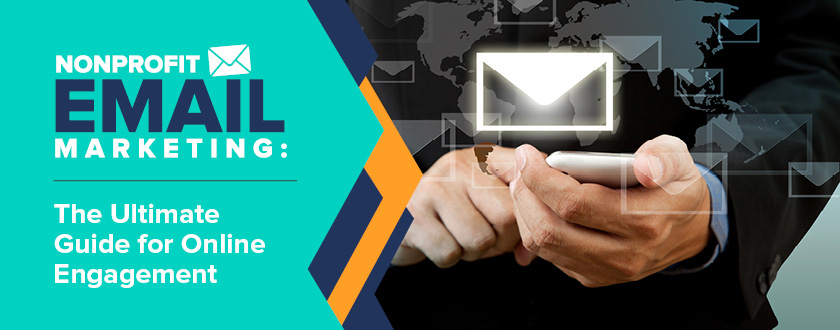Once upon a time, the ability for a nonprofit to tell its story was handled through analog means. Spoken conversations, written letters, and in-person events were crucial for spreading the word.
However, once nonprofit technology entered the equation, it drastically optimized the process. Social media, digital advertisements, websites, and email have improved nonprofit audience outreach and fundraising. It has also allowed nonprofits to communicate more with different types of campaigns that tell a different story based on the conversion you want.
In this guide, we’re going to focus on one of those outlets in particular: email. We know that simply sending an email isn’t enough, especially if you want to see the full value that technology can provide. The strategy behind your email marketing efforts should always roll-up to the overall organizational story you are trying to tell.
With that in mind, we’re going to explore nonprofit email marketing, the types of campaigns available to you, and the best practices to truly excel. Use the below navigation to jump to the point that piques your interest, or begin reading from the top:
- Email Marketing for Nonprofits: An Overview
- Types of Nonprofit Email Marketing Campaigns
- Nonprofit Email Marketing Best Practices
Email Marketing for Nonprofits: an Overview
Nonprofit Email Marketing Statistics
Over the past few years, a few buzzwords have grown to prominence in the world of nonprofit outreach. “Social media fundraising,” “multichannel marketing,” and “email marketing” are now popular tactics when it comes to spreading nonprofit awareness.
Let’s focus on “email marketing,” as that’s the highlight of this blog post as a whole. Why are so many nonprofits utilizing email in their overall digital strategies?
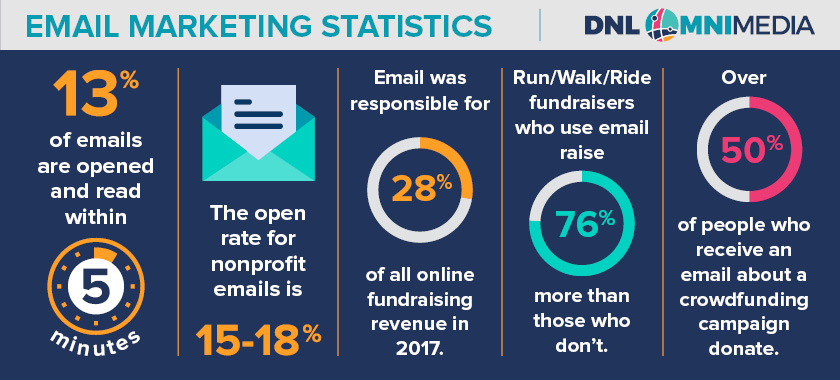
Well, take a quick look at the data surrounding email marketing and you’ll understand why:
- Of all emails sent, 13% are opened and read within 5 minutes.
- In general, the open rate for nonprofit emails ranges from 15-18%.
- In 2017, email was responsible for 28% of the total online fundraising revenue.
- In this same year, email prompted 31% of all online donations made by Gen X.
- Over 50% of people who receive an email about a crowdfunding campaign end up donating to the campaign.
- Fundraisers participating in walk/run/ride events who use email in their outreach raise an average of 76% more than their counterparts who don’t.
Explore these statistics and more through Nonprofits Source’s online giving statistics resource page.
As you can see, email marketing is a powerful tool for nonprofit professionals and fundraisers alike. It’s a method for reaching supporters across the generations and a clear conduit of online donations. Finally, its predictable and repeatable impression metrics allow organizations to put their resources behind a “sure thing.”
Let’s dive into the types of nonprofit email marketing campaigns your organization may choose to conduct.

Types of Nonprofit Email Marketing Campaigns
While the largest proportion of nonprofit emails are related to fundraising, there are a variety of email campaigns that your nonprofit may choose to host— each with their own aim and strategy for success.
This section will discuss the various types of marketing campaigns you may hold to further your fundraising, stewardship, and even advocacy efforts.
Welcome Series
Perhaps the most important of the nonprofit email marketing campaign types, a welcome series is a type of email campaign that begins building the relationship between brand new supporters and your mission.
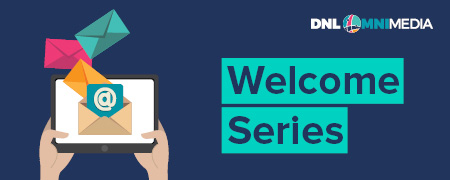
While we know that it’s significantly more beneficial to retain a donor than acquire a new one, we also know that the first-time donor retention rate is less than 20%. With that in mind, a welcome series nurtures new donors, educates them about your organization, and strategically leads them toward a deeper commitment to your organization.
Event Campaigns
An event campaign has one goal: to get your nonprofit’s current and prospective supporters to engage with your upcoming event.
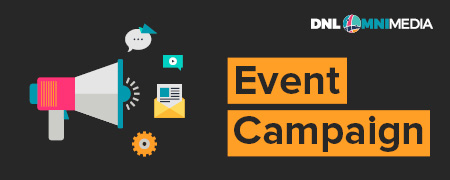
There are a few specific aspects you’ll want to include in every event email:
- Details about the event itself, such as date, time, and venue.
- An articulated reason for why you’re holding the event.
- The specific fundraising goal you’re trying to achieve.
- A clear call-to-action for what you want supporters to do after reading the email.
Your event email campaigns will likely be structured as a drip series (learn more below), with the goal of securing new participants in your event. Further, they could include follow-up update emails for those that have committed.
Educational Campaigns
You’re an expert on your nonprofit’s cause. At any point, you can probably share statistics, historical context, and updates regarding the necessity of your mission and what you’re doing to further it. If your current and prospective donors were as informed as you are, your fundraising efforts would be significantly more effective.
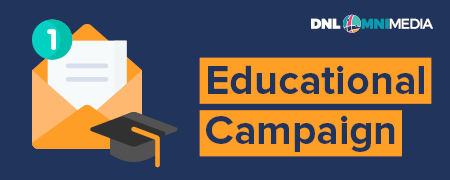
Educational email campaigns are used to share information with supporters of your organization. This inspires them to give and empowers them to spread the word themselves.
Advocacy Campaigns
Advocacy email campaigns involve sharing information about the many ways your supporters can advocate for your mission publicly and have an impact beyond giving directly to your organization.
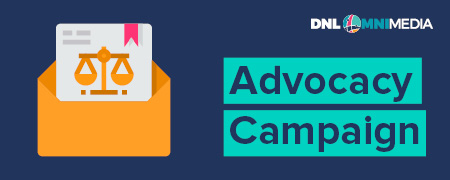
The emails in these campaigns could include:
- A download link for your organization’s mobile advocacy app.
- Email templates that supporters can use to contact their government representatives.
- Phone numbers and conversation templates to use when calling officials.
- Links that supporters can share on social media, pointing to information about your advocacy efforts.
The goal of these email campaigns is to raise awareness and inspire action. So, regardless of the specific call-to-action, you include, it needs to be clearly articulated and eye-catching.
Gratitude Campaigns
This type of email campaign is most often held after a fundraising or advocacy initiative, whether it’s for an event, a major campaign, or even for your year-end giving effort.
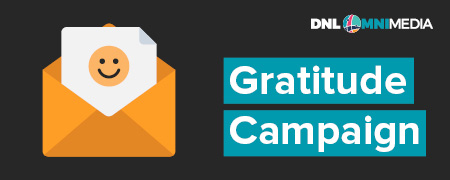
With this, you send thank-you communications to all that had a positive impact on your fundraising efforts. For example, include those who donated, those who shared, those who attended— the list can go on.
When sending gratitude emails, be as specific as possible about the impact the campaign has had. Include final figures on donations made and information about the exact actions those donations funded. For example, after completing a capital campaign, you might send the following: “Because of your generosity, X amount was raised. With these gifts, we were able to fund our new community center to completion.”
Retention Campaigns
Donor retention is an ongoing challenge for nonprofit professionals. Not only is first-time donor retention on the decline, but overall donor retention rate has been below 50% for the past 10+ years. Again, we know that retaining donors is significantly more efficient than acquiring new donors— and that’s where retention campaigns come in.
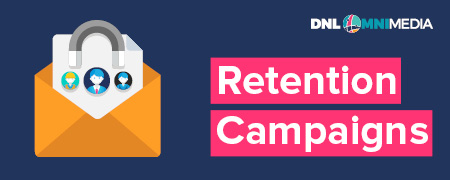
With a retention campaign, you send additional stewardship communications to those donors identified as “at-risk” in your CRM. You send emails to these donors, advocating for your cause and the impact their personal contributions make toward it. Ideally, your organization retains donors in response.
Donation Campaigns
The most popular type of nonprofit email marketing campaign, donation campaigns are held during periods of fundraising. This essentially involves sending virtual fundraising letters to potential donors via their inbox. However, there is a bit of strategy involved to ensure success.
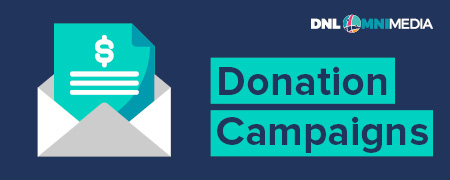
First, you’ll want this email to be shorter than direct mail fundraising letters as the digital attention span is shorter. Include a direct link to your organization’s online donation page and make it clearly visible for easy access.
Beyond that, you should even personalize your fundraising letter by the donor— such as briefly mentioning a donor’s past giving history and relationship with your organization.

Nonprofit Email Marketing Best Practices

Solidify Your Tech Stack
The technology needed for successful nonprofit email marketing may seem fairly straightforward— after all, you only need a functioning email address, right? Not quite.
There are a variety of tech tools that are involved in a strong email marketing campaign. For example, you may want to invest in:
- Your CRM. This email addresses and donor information contained in your CRM is what your email marketing is built on.
- Your website. Your website is a common way that donors sign up for your email list, so integrations between this and your CRM are essential for effective data storage.
- Email automation software. This allows you to schedule emails for the future, both when it comes to drip campaigns and just general future sending.
- Additional marketing channels. As you’ll soon see, a multichannel strategy is the most effective way to spread the word. Any additional channels you use need to work in tandem with your email strategy.
Whenever you’re using a variety of software to achieve one goal—in this case, successful email marketing— it’s crucial to build out a strong strategy to ensure these solutions work in harmony. However, your team may also choose to invest in robust software that can handle many of these aspects within one provider—such as the Blackbaud suite or Salesforce’s solutions for nonprofits.
Regardless of the path you choose, even if you’ve invested in the best email marketing software for nonprofits, it might be beneficial to work with a nonprofit technology consultant to help develop your strategy. From capitalizing on integrations, constructing effective drip campaigns, or even training your team to navigate robust software, these team members can be a valuable resource.

Grow Your Email List Strategically
It’s simple: you could have perfectly optimized email content, but if you don’t have a strong email list to send it to, the effort is null. However, simply collecting every email address your organization encounters over the years and sending out regular email blasts is not the way to go.
We know that the larger your email list is, the better. After all, this is just more potential eyes for your content. But if that list isn’t quality— as in, full of donors that are genuinely likely to respond, and no others—then it’s going to hurt you more than help. So, it’s important to grow your email list in an ethical and strategic manner. For example:
- Provide multiple opportunities to sign up for your email list. For example, your website, your donation forms, and even events are all great opportunities to add donors to your email list.
- Clearly ask donors to opt-in for your list. Rather than assuming that new donors want to receive emails, have them check a box or otherwise indicate that they’re interested in these communications.
- Allow donors to opt-out at any point. Every email should include instructions for those who don’t want to receive them going forward. When you receive a request to stop email communications, ensure that the supporter is removed from your list immediately.
- Regularly purge your list. Revisit your email list at set intervals and remove entries that aren’t useful. For example, if any email addresses are no longer deliverable, remove them.
This will benefit your donors and your organization alike, as you won’t be sending communications to those unlikely to respond (and causing offense while doing so).
Bonus: Check out this guide to nonprofit data management strategies to explore how effective data management can improve other aspects of your organization’s fundraising.

Incorporate Drip Marketing Concepts
Drip email campaigns draw on the concept of marketing funnels, in which recipients receive a scheduled, ordered series of communications.
Let’s use an example to illustrate drip marketing email campaigns— a welcome series. When using a drip stream, the steps are generally as follows:
- New supporters receive an email, perhaps after donating to your campaign. This first email is generally introductory and simply an overview of your organization.
- Those supporters are guided through a strategic series of successive emails. Each email in the drip stream is more specific and pointed than the one that preceded it, guiding the reader toward a specific action that you want them to take. For new donors, the actionable goal may be making the “golden donation,” or giving a second time.
- As the supporter continues learning about your nonprofit through these emails, they’re inspired to take the intended action— donating to your organization. At this point, they’re taken out of the welcome funnel and put into your general email list.
While this example discusses drip streams in regards to welcome series, this can be applied to a variety of nonprofit email marketing efforts. In fact, any of the email campaign types listed above could be done using a drip stream.

Write Compelling Content
Whether we’re working on a web design project or even developing a mobile advocacy app, at Team DNL, we understand the importance of compelling content. That’s especially true for nonprofit email marketing.
54% of all nonprofit emails are read on mobile devices, and the smartphone attention span is shorter than other devices. This means it’s crucial to catch (and keep) your email reader’s attention.
There are a few best practices when it comes to creating compelling content for your nonprofit’s email marketing efforts:
- All email content should be mobile-friendly. If you have highly-detailed images with small text, that may not perform well through email platforms on mobile devices.
- Make the most of visuals. Images and videos are a great way to draw the eye and break up the text.
- All text content should be short and scannable. If supporters can’t read it in a few minutes, they likely won’t.
- Include all essential information “above the fold.” Crucial details such as dates and ways to donate should be visible without scrolling.
- Link out to additional resources. While you shouldn’t write blog-post length text within an email, you can certainly link out to longer content.
Just as you need to email the right audience, you also need to send the right content when doing so. In addition to being educational and informative, your nonprofit’s email marketing content must be compelling.

Use a Multichannel Campaign
Email is a great way to increase awareness of opportunities to give to your nonprofit. However, using email alone may not be enough to get the large-scale recognition and participation you seek.
A multichannel marketing campaign that utilizes email along with other channels is proven to have the highest chance of success. With nonprofit text messaging audiences growing by 26% in recent years and some nonprofit organizations’ websites generating $0.30 per visitor to their site— there’s reason to spread your message across multiple platforms.
When it comes to utilizing multichannel marketing, there are a variety of outlets available to your nonprofit. For example:
- Direct Mail
- Donor Text Messaging
- Direct Phone Calls
- Website
- Social Media
- Paid Advertisements
However, simply using all of these channels isn’t enough. A strong strategy that uses each of these channels in tandem, rather than creating an overwhelming echo chamber, is key.
For example, you should cross-promote your various marketing channels— such as sharing links to social media and your website on direct mailings. And, you should seek opportunities to save resources when utilizing multiple channels— such as applying for Google Grants to fund your digital advertisements.
As we’re going to discuss in the next step, this is one area where bringing in a nonprofit marketing consulting firm can be a valuable investment in your success. Continue reading to learn more.

Bring in Outside Assistance to Create a Comprehensive Strategy
If you’ve read this guide and are now feeling a bit overwhelmed with the many ways you can utilize nonprofit email marketing, the tips to make the most of your email campaigns, or something else, we’d understand. There is quite a lot to consider when it comes to creating a successful email marketing strategy.
There are a variety of moving parts involved in email marketing for nonprofits, including software, copy, data, team members, various communication channels, and more. We’d encourage your team to work with a nonprofit technology and marketing consulting firm to develop a comprehensive strategy.
Here are a few services a nonprofit technology and marketing consulting firm may offer:
- Technology optimization. From discovering the best email marketing software for nonprofits to building essential integrations within your tech stack so your marketing campaign primed for success, these consultants can fill in gaps in your tech strategy.
- Email campaign creation. This includes creating a strategy for your drip stream, creating attractive, easy to perceive, and consistent email templates, or even scheduling your campaign’s automation.
- Data maintenance. Successful email campaigns are built on accurate data. This team can build out data hygiene procedures to ensure you’re working off the most accurate, up-to-date information at all times.
- Multichannel strategy creation. A consultant can create a strategy that unites all of your tech tools and communications channels for one cause— your nonprofit’s fundraising. Explore this concept in further detail in this DNL OmniMedia guide to creating a nonprofit digital strategy.
For example, Team DNL often tackles large-scale ($15K+) email marketing consulting projects. Not only can they build out your tech stack and data management strategy, but as experts in the Blackbaud suite, they can also create email series for users of the Luminate Online platform. Whether creating templates or building out your drip series, Team DNL can be a valuable resource.
Summary
Nonprofit email marketing may seem overwhelming at first glance, but when successful, it can provide major benefits for your organization. Plus, if you’re feeling stressed about creating a successful strategy for your team, remember that you can contact the team at DNL OmniMedia to help.
For more information about nonprofit email marketing and other related topics, check out the following additional resources:
- Nonprofit Technology: Why What & How of Smarter Fundraising. For a comprehensive primer on the wide world of nonprofit technology solutions, check out this guide.
- Nonprofit Marketing Consulting: Overview + 5 Top Picks. Throughout this guide, we’ve discussed bringing on a marketing consultant to build your email strategy. Check out an overview of these firms and our top picks for consultants.
- Creating a Nonprofit Digital Strategy: 7 Steps for Success. Email marketing shouldn’t be the only outreach activity you use. Explore creating a comprehensive digital strategy to further your efforts through this guide.

